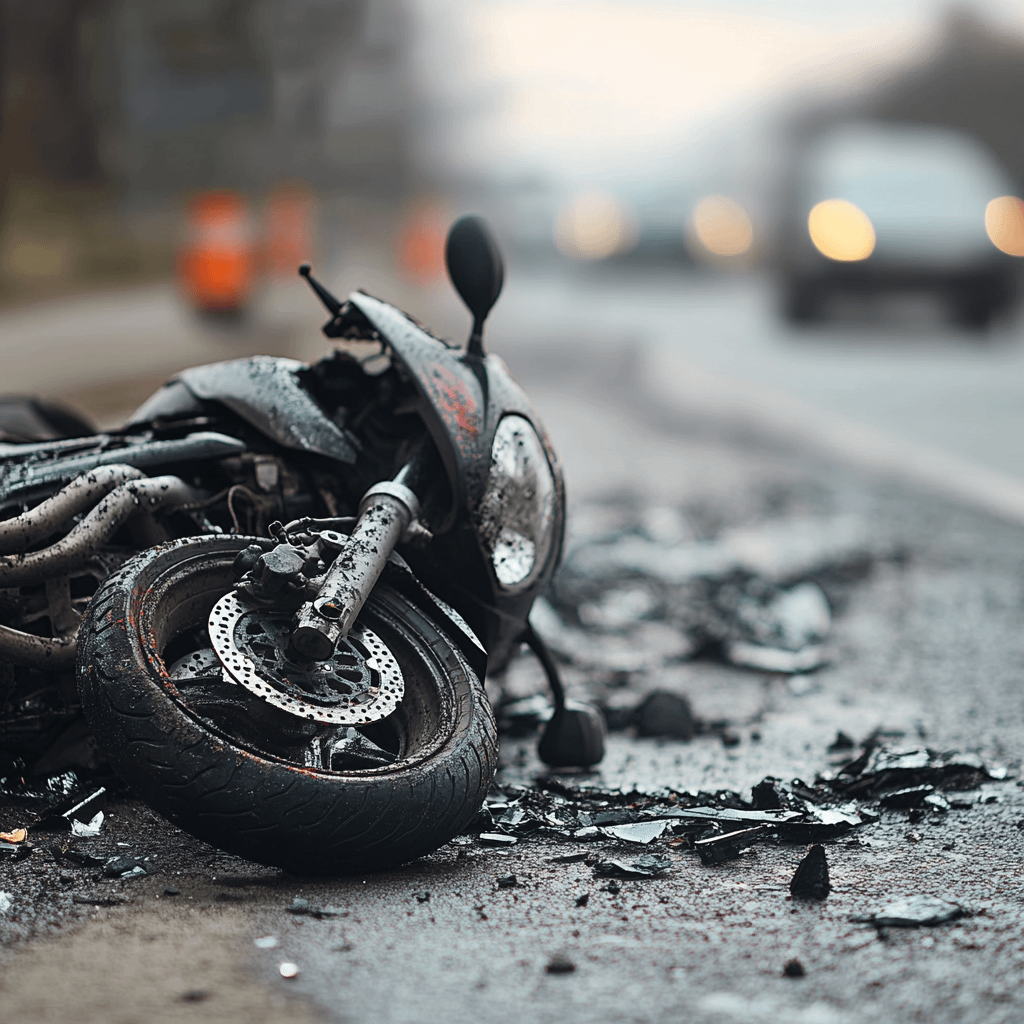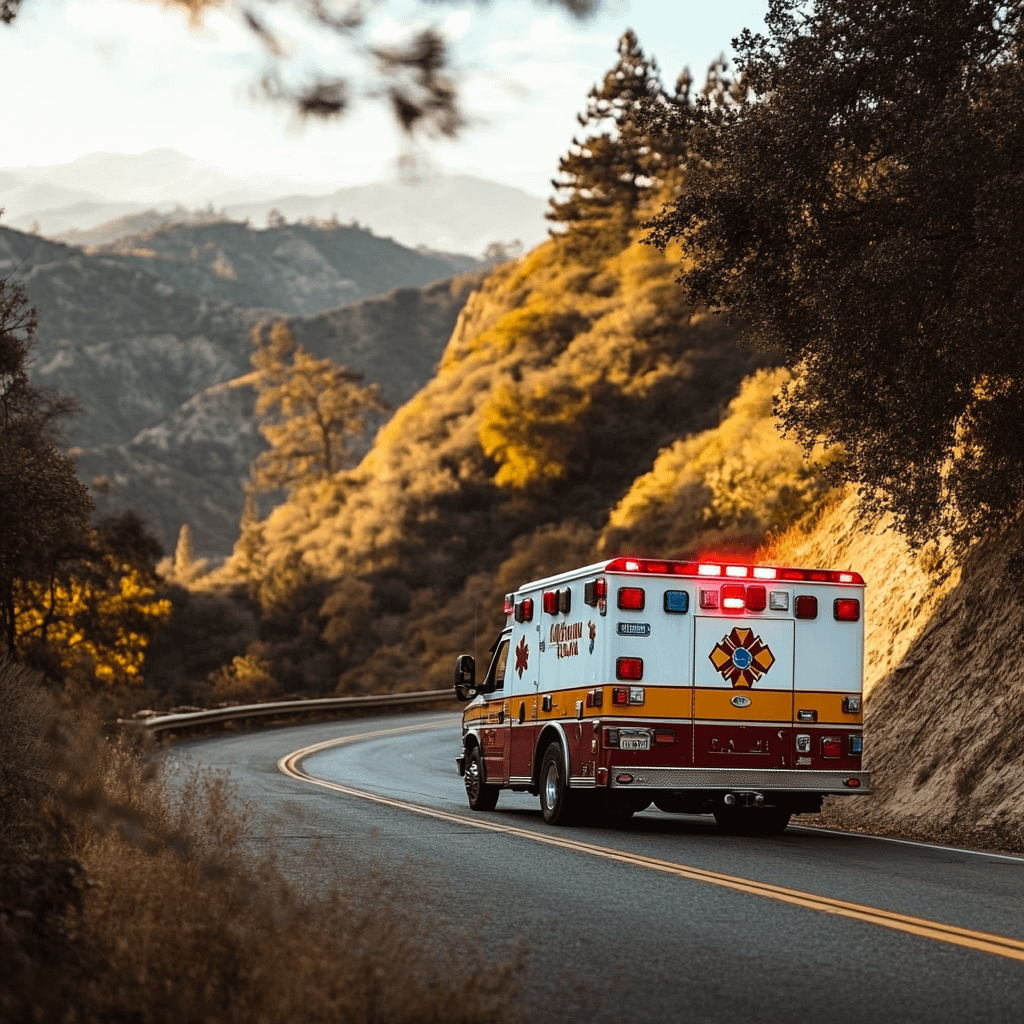
 Trusted Content
Trusted Content
Key Takeaways
- Motorcycle accidents are caused most often by other drivers, environmental factors, and certain motorcyclist behaviors.
- Although most motorcycle accidents will result in injury rather than death, injuries can be severe and may even lead to permanent disability.
- Motorcyclists who have been injured in an accident, even one in which they were partly at fault, may be eligible to file a lawsuit.
A motorcycle accident can happen in the blink of an eye, leaving consequences that last forever. No matter how much experience a rider has, there is only so much they can do to protect themselves from negligent drivers and hazardous conditions. If you have been in a motorcycle accident, you may have the right to seek monetary damages to cover medical bills, lost income, and other losses.
Understanding the most common reasons these wrecks happen, including those in which the rider may be at fault, can help you make the strongest case for the most amount of compensation. It can also allow you to rebut allegations that you were at fault for the accident, a claim that could decrease your potential settlement.
Having skilled legal counsel is one of the most critical success factors in a motorcycle accident case. If you have been involved in a motorcycle crash, contact our motorcycle accident attorneys at Porter Simon Sierra Injury Lawyers for a free consultation.
How Often Do Motorcycle Accidents Happen?
According to the National Highway Traffic Safety Administration (NHTSA), there were about 6,218 fatal motorcycle accidents in the United States in 2022. These account for about 15% of all traffic fatalities, making motorcycles some of the most dangerous vehicles to operate. Thousands more victims were injured in these accidents, many of whom suffered expenses and losses such as medical bills, lost wages, and loss of enjoyment of life.
NHTSA data indicates that California and Nevada are among the top 20 most dangerous states for motorcyclists based on the overall number of accidents that riders in these states experience. The simple and unfortunate fact is that these riders are substantially more likely than those in other states to be involved in a motorcycle crash resulting in death or injury. It is likely that the number of motorcycle accidents will continue to increase as it has in recent years.
California and Nevada are among the top 20 most dangerous states for motorcyclists based on the overall number of accidents that riders in these states experience.
Leading Cause of Motorcycle Accidents
Extensive studies over the years have identified three broad categories of motorcycle accident causes:
Other Drivers
Motorcycles are smaller and more difficult to see compared to passenger vehicles and trucks, which makes it easy to understand why other motorists cause most motorcycle accidents. Some of the specific causes include:
- Cars making left-hand turns: Drivers making a left turn at an intersection may not spot an approaching motorcyclist, especially if they are speeding or not paying attention. Visibility becomes an even bigger issue in heavy traffic, poor weather, and low lighting.
- Dooring: “Dooring” refers to opening a car door in the path of an oncoming motorcycle, which typically occurs while parking on the street. This creates an obstruction in the rider’s path that can cause significant injuries such as ejecting the motorcyclist. Drivers and passengers should check their mirrors before opening doors to prevent these accidents.
- Lane switching: When a driver changes lanes, it is their duty to check their mirrors to ensure it is safe to do so. Because it is more difficult to spot motorcyclists, drivers should be extra cautious when switching lanes. Sudden lane changes and those made without the use of turn signals are likely to cause wrecks.
- Rear-ending: Rear-end accidents are common among all vehicle types, but especially in motorcycle accidents. Speeding and following too closely are two reasons these wrecks happen, plus the motorist may not notice the motorcycle stopped behind a larger vehicle. The motorcyclist can easily be slammed into the car in front of them, with often fatal results.
- Head-on collision: A head-on collision can occur when a driver turns into oncoming traffic, drifts across the center line, or drives the wrong way down a one-way street. Even with a helmet, these wrecks can cause death or permanent injury and disability. Head-on collisions are strong indicators of driver negligence since they are generally avoidable with careful driving.
Environmental Factors
Non-human factors from the surrounding environment also account for many motorcycle wrecks. These elements present an even greater threat if negligent drivers are involved. Examples of environmental factors include:
- Road conditions: All motorcyclists should be aware of hazardous road conditions that may cause accidents. Potholes, highway ruts, uneven or unpaved surfaces, inadequate traffic signs, and slick surfaces (e.g. from grass clippings) are all common culprits in these wrecks.
- Weather: It is vital to adjust one’s driving behavior for changing weather. Rain, snow, and wind can pick up suddenly and make the road unsafe to ride on. Riders should pull over and wait out inclement weather if it is possible to do so safely.

Motorcyclist Behaviors
Some motorcyclists contribute to their own crashes by engaging in risky operating behaviors. However, it is important to note that in both California and Nevada, being partially at fault for an accident does not necessarily prevent a motorcyclist from recovering damages. Common motorcyclist actions that lead to wrecks are:
- Speeding: The NHTSA reports that, in 2021, approximately 33% of all motorcycle riders involved in fatal crashes were speeding. In light of both the above-named factors and the size and weight differences between motorcycles and larger vehicles, speeding is undeniably risky. A speeding motorcyclist will nearly always share some degree of fault.
- Alcohol use: It is illegal for anyone to drive under the influence of alcohol. But motorcyclists are especially putting themselves and others at risk if they drink and ride. Proper handling and maneuvering of a motorcycle requires coordination and focus, which alcohol use and intoxication will undermine.
- Invalid licenses: To obtain a valid motorcycle license, a rider must meet safety requirements that are unique to their vehicle. This includes passing a skills test to ensure they can safely operate the motorcycle. The absence of a valid license often indicates the incapability of riding a motorcycle.
- Large riding events: When motorcyclists ride in large groups, they often share lanes, making it more difficult to spot and avoid road, environmental, and traffic hazards. It is also common for these groups to be distracted by one another during their rides. The more motorcycles in a given area, the greater the chances of a wreck.
- Lane splitting: Lane splitting, the practice of riding between lanes or rows of slow-moving or stopped traffic, is legal in California but illegal in Nevada. Wherever it is practiced, legally or not, many safety advocates believe it is unnecessarily risky. Dooring and vehicle lane changes are two specific dangers that lane-splitting riders will likely encounter.
Percentage of Motorcycle Accidents Caused by Cars
Overall, motorists are usually to blame for motorcycle wrecks due to inattention, unsafe lane changes, and failure to notice motorcyclists. Data from the Federal Highway Administration Office’s Motorcycle Crash Causation Study indicates that as many as 47% of motorcycle accidents are caused by the drivers of other vehicles.
What Percent of Motorcycle Accidents Result in Injury or Death?
In general, injuries are more likely outcomes of a motorcycle accident than death. Data from the NHTSA revealed that in 2022, 82,687 motorcyclists were injured in accidents while there were 6,218 fatalities. That being said, motorcycle accident injuries can still be severe. In some cases, they may lead to permanent disability, such as paralysis, that irreversibly and dramatically alters the victim’s quality of life.

Cause of Death in Motorcycle Accident Fatalities
Compared to cars and other larger vehicles, motorcycles lack a protective frame, airbags, and other safety features. These differences explain why fatality is such a common result of motorcycle accidents. More specific causes of motorcycle deaths include:
- Not wearing a helmet: This is perhaps the most common cause of death and yet arguably the most easily preventable one. Wearing a helmet is the law, but some riders choose to ignore it. Another common cause is when riders wear a helmet that is not certified.
- Speeding: Not only does speeding significantly increase the risk of an accident in general, but it may be deadly because of the aforementioned lack of safety features. Riders who are going too fast are unlikely to have time to stop in the event of an emergency, such as an imminent collision.
- Head injuries: With or without a helmet, injury to the head such as a skull fracture will typically be fatal. Even if the victim does not die, the consequential brain injury will dramatically change the rider’s life forever.
- Internal injuries: Roads are unforgivable, and the force of colliding with them is catastrophic. Slamming into the road, such as after being thrown off the bike, can cause deadly internal bleeding and organ damage.
Find Out if You Are Eligible to File a Motorcycle Accident Lawsuit
Motorcyclists who are partially at fault in an accident may still have legal recourse. Depending on the state, the share of blame assigned to a motorcycle rider may reduce the amount of damages they can recover but not necessarily bar them from seeking compensation. Unfortunately, this also means that insurance companies may try to shift additional blame to the motorcyclist to decrease the amount of compensation the motorcyclist can recover.
The motorcyclist must be able to demonstrate that a driver was somehow negligent, that the negligence caused the accident, and that the motorcyclist suffered damages as a result. In cases involving non-human factors like road conditions and poor weather, governmental entities and contractors responsible for maintaining the roads could be held liable. But other drivers can negligently cause wrecks in these situations as well.
Regardless of the circumstances in your case, you owe it to yourself and your well-being to consult an experienced motorcycle accident attorney serving California and Nevada. Contact Porter Simon Sierra Injury Lawyers today to get started.
Article Sources
-
National Highway Traffic Safety Administration
https://www.nhtsa.gov/road-safety/motorcycles -
National Safety Council
https://injuryfacts.nsc.org/motor-vehicle/road-users/motorcycles/ -
Federal Highway Administration
https://www.fhwa.dot.gov/publications/research/safety/18064/18064.pdf -
National Highway Traffic Safety Administration
https://crashstats.nhtsa.dot.gov/Api/Public/ViewPublication/813589.pdf -
Insurance Institute for Highway Safety
https://www.iihs.org/topics/fatality-statistics/detail/motorcycles-and-atvs#yearly-snapshot%20 -
National Highway Traffic Safety Administration
https://www.nhtsa.gov/motorcycle-safety/choose-right-motorcycle-helmet






